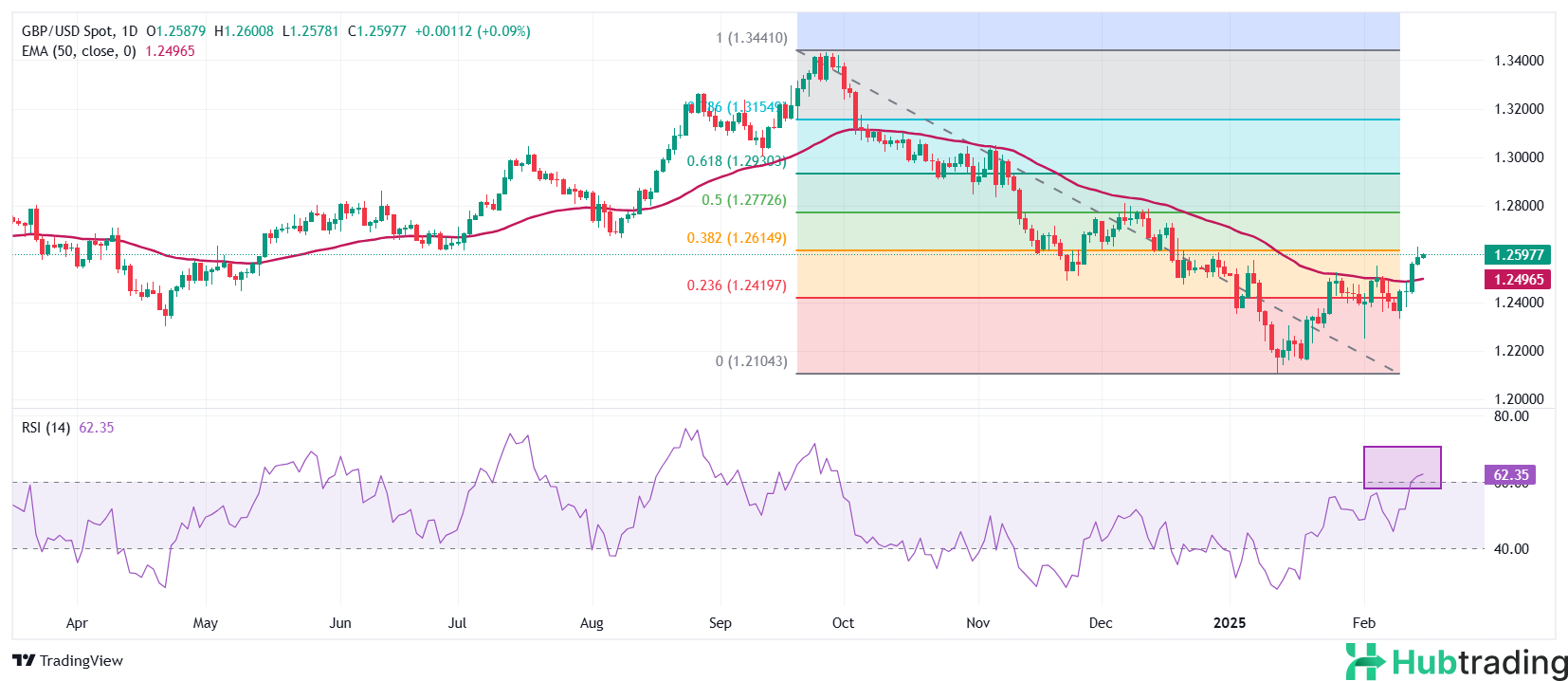- The Pound Sterling holds steady against its major peers on Monday as uncertainty builds ahead of UK employment and inflation data.
- Bank of England (BoE) Governor Bailey anticipates some softness in labor demand.
- Fed's Logan reiterates her cautious stance on interest rate cuts.
The Pound Sterling (GBP) remains steady against its major peers at the start of the week as investors adopt a cautious approach ahead of the UK employment data for the three months ending December, set to be released on Tuesday. Attention will be on the labor market to see if the slowdown in hiring is linked to Chancellor Rachel Reeves' announcement of an increase in employers' National Insurance contributions. The hiring pace has already sharply slowed, with the economy adding only 35K workers in the three months ending November, compared to a much higher 173K in the previous period.
Bank of England (BoE) Governor Andrew Bailey expressed concerns about softness in the labor market but remains confident that the disinflation trend continues. The UK Office for National Statistics (ONS) is expected to show that the ILO Unemployment Rate rose to 4.5% in December, up from 4.4%. Additionally, strong wage growth, a key driver of inflation, is likely to continue, with average earnings (including and excluding bonuses) expected to rise to 5.9%. This could fuel concerns about persistent inflation and potentially lead to stagflation risks.
Later this week, attention will also shift to the UK Consumer Price Index (CPI) and Retail Sales data for January, which will be released on Wednesday and Friday.
Daily Digest Market Movers: Pound Sterling Trades Sideways Against US Dollar
- The Pound Sterling edges higher toward 1.2600 against the US Dollar (USD) in Monday's European session. The GBP/USD pair remains broadly sideways as the US Dollar Index (DXY) struggles to hold the immediate support at 106.70, marking a two-month low.
- The US Dollar remains under pressure, helped by improving market sentiment. Investors' fears of an imminent global trade war have diminished due to delays in President Trump’s reciprocal tariff plans, which may not take effect until April 1.
- US inflation data for January showed stronger-than-expected CPI and PPI results, while Dallas Federal Reserve Bank President Lorie Logan emphasized the need for caution on interest rates, stressing the central bank’s focus on data and geopolitical developments.
Technical Analysis: Pound Sterling Strives to Break Above 1.2620

The Pound Sterling remains inside Friday’s trading range but aims to break decisively above the key 38.2% Fibonacci retracement level at 1.2620.
The near-term outlook for GBP/USD is bullish as it holds above the 50-day Exponential Moving Average (EMA) around 1.2500. The 14-day Relative Strength Index (RSI) is advancing above 60, suggesting the potential for further bullish momentum if the RSI sustains above this level.
Key support is found at the February 3 low of 1.2250, while resistance is located at the 50% Fibonacci retracement at 1.2767.





